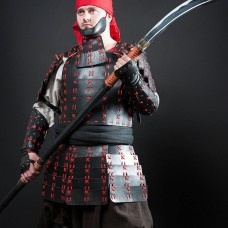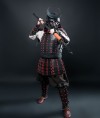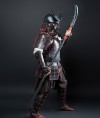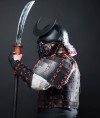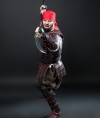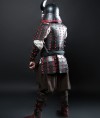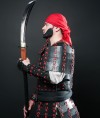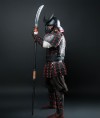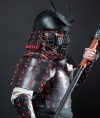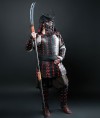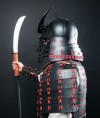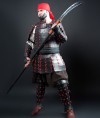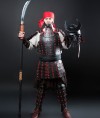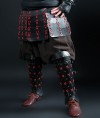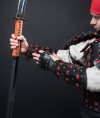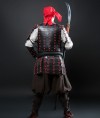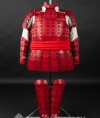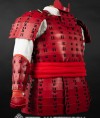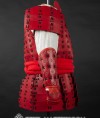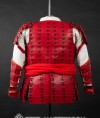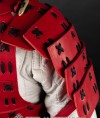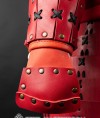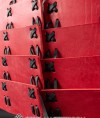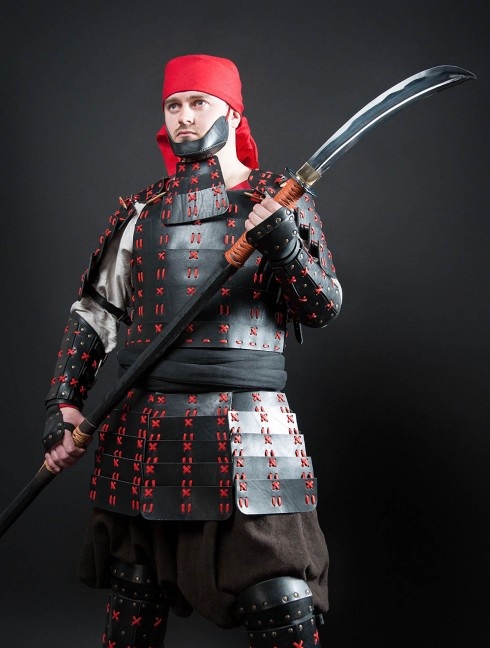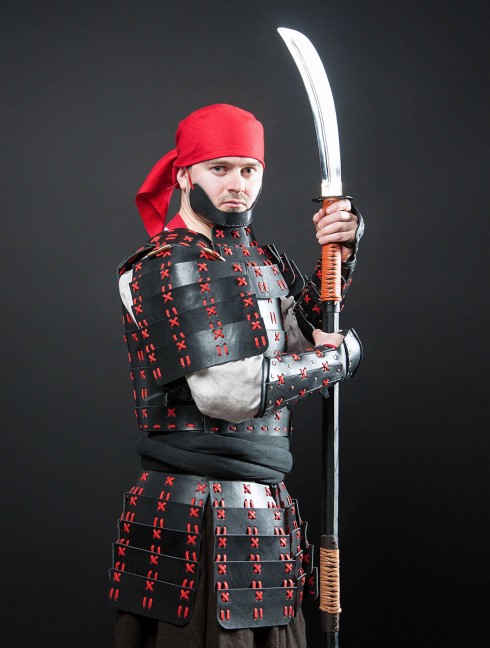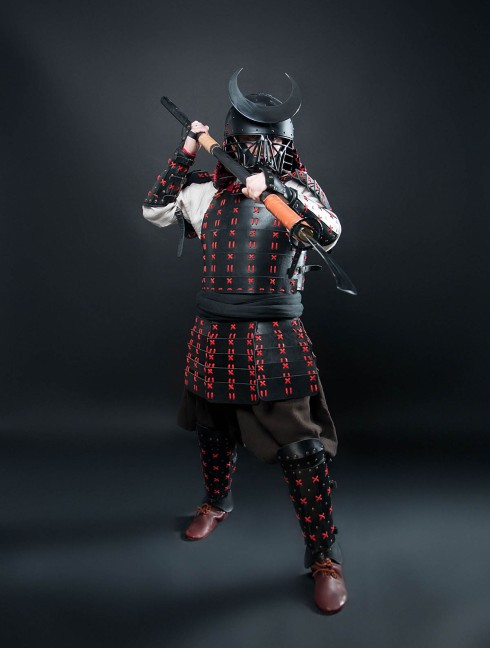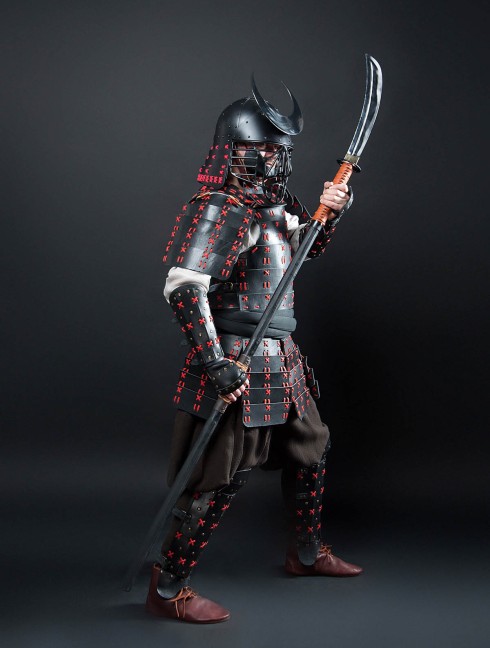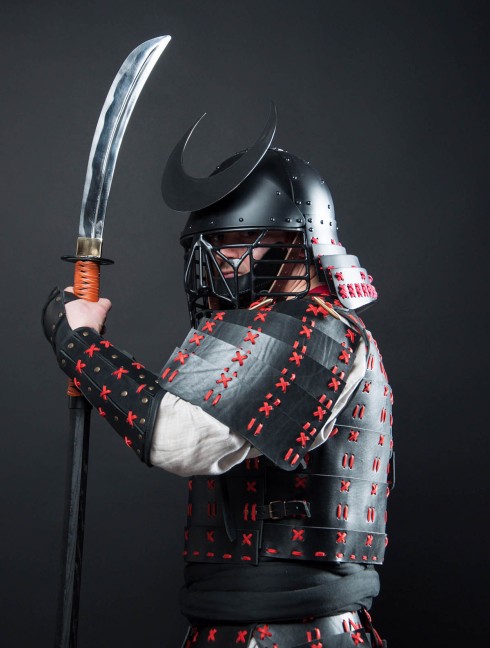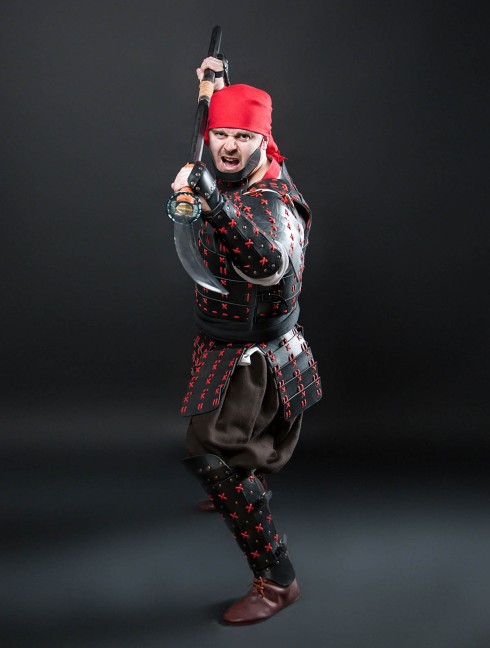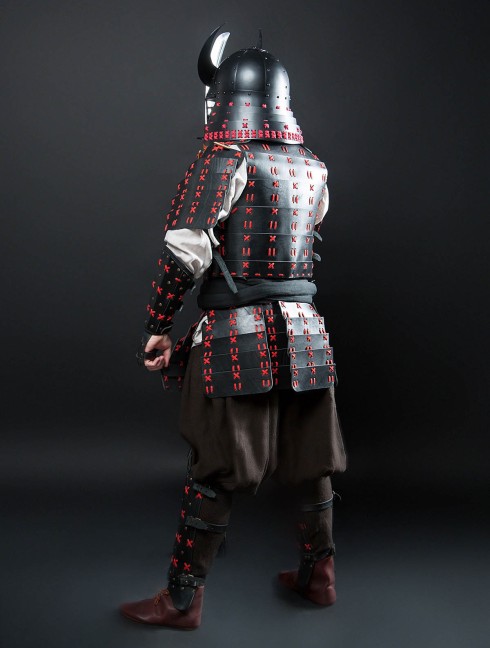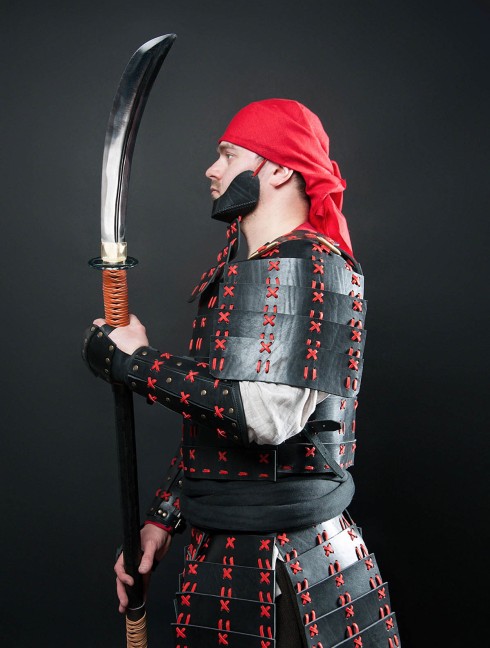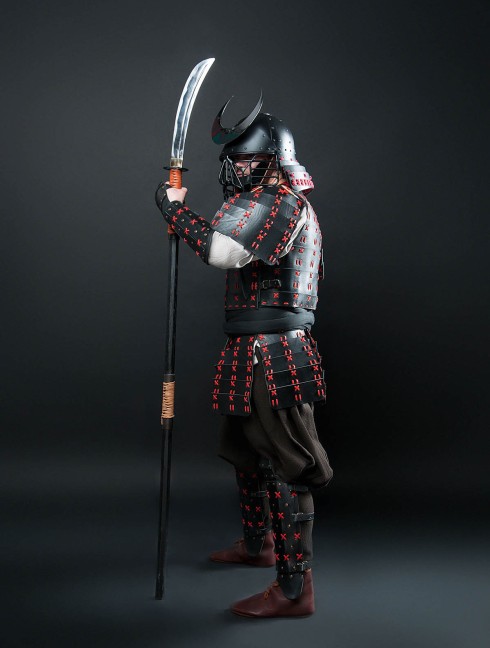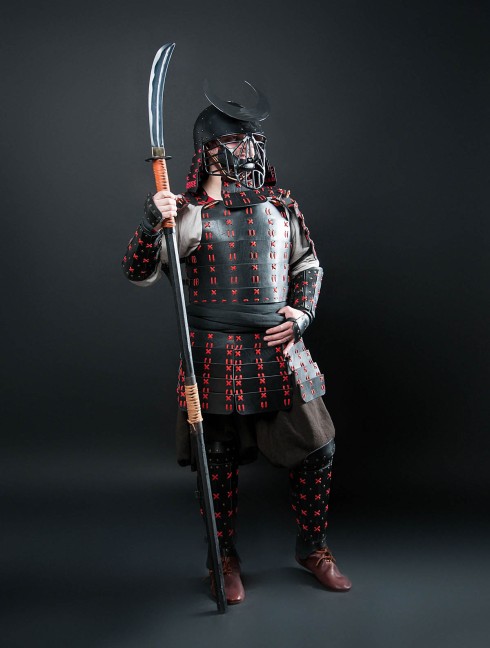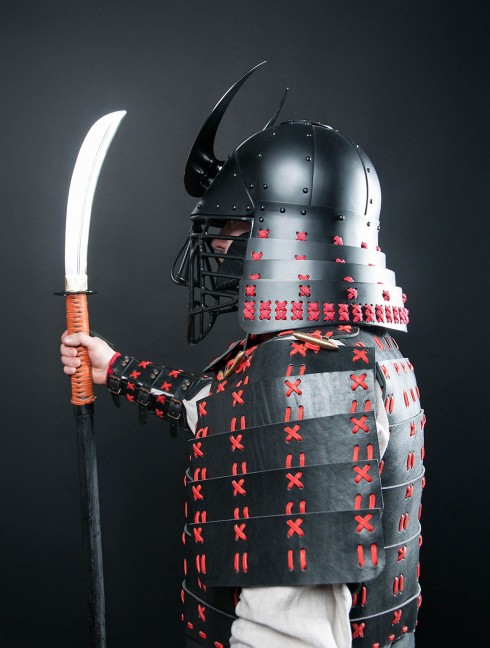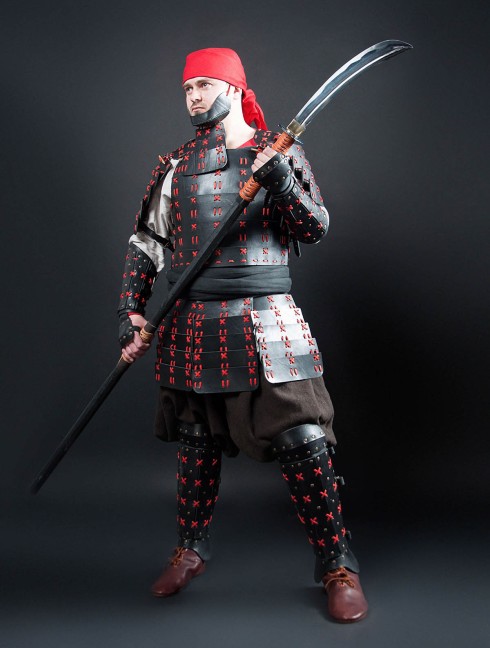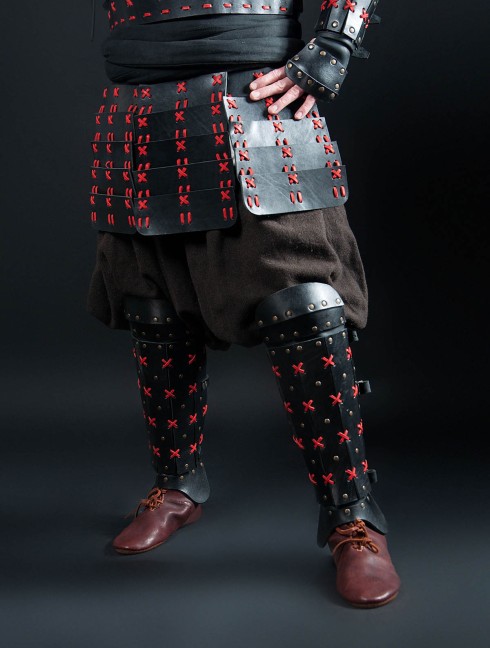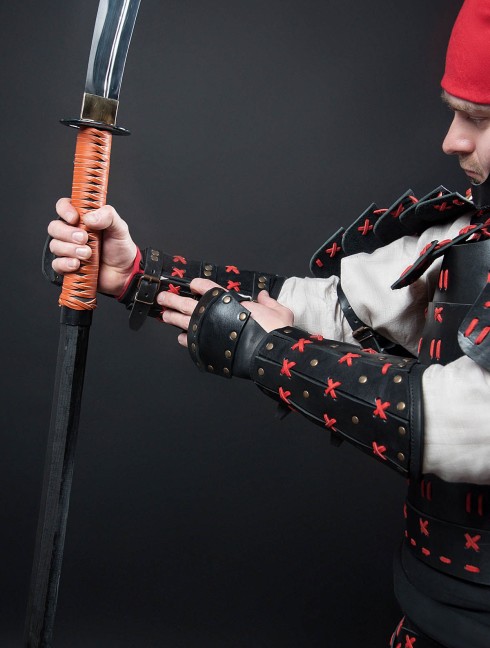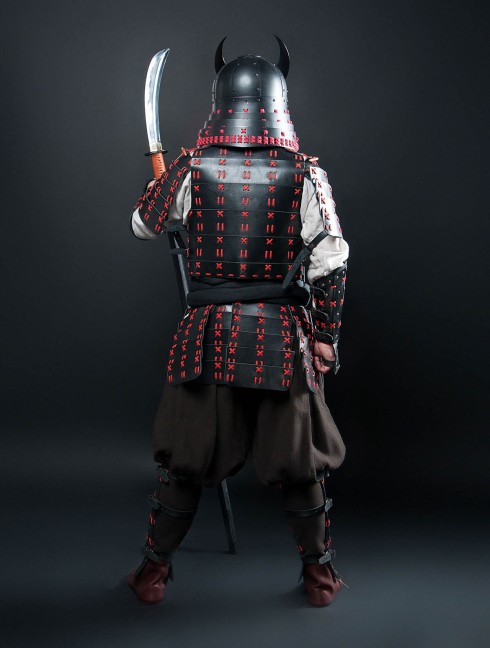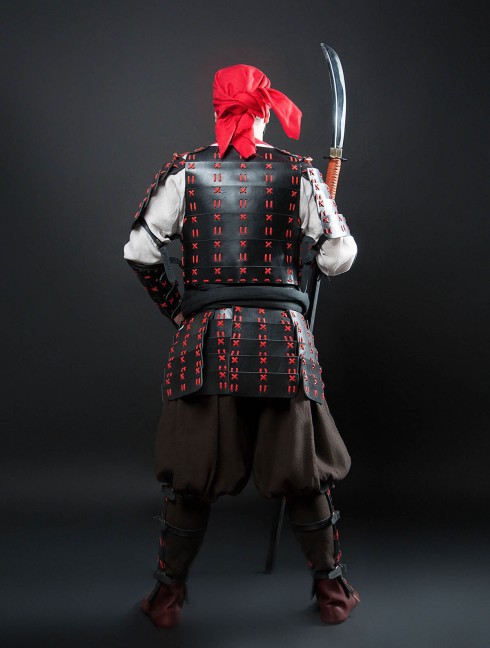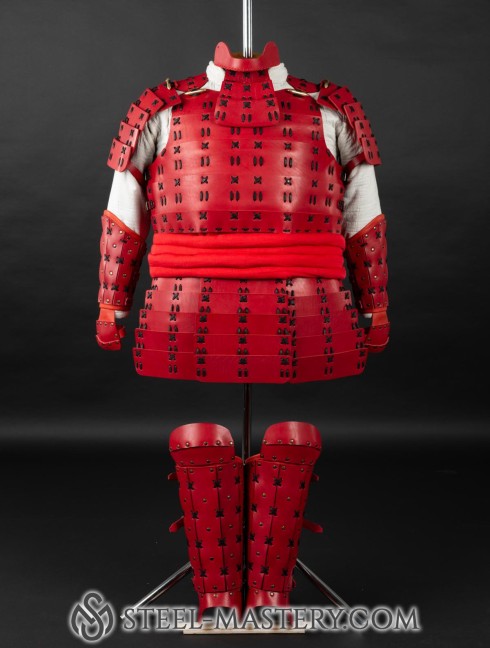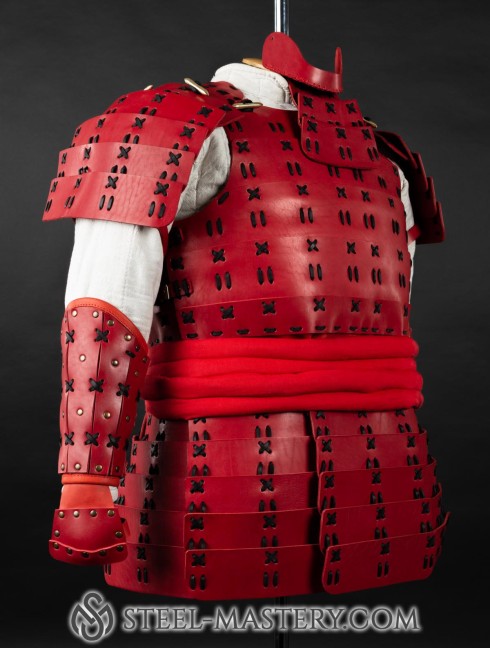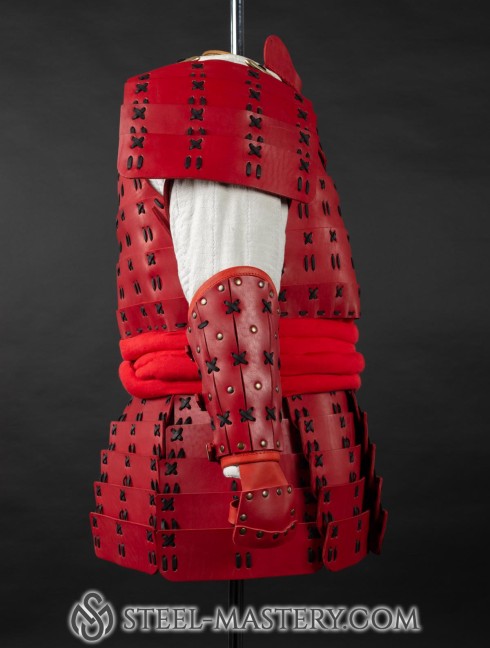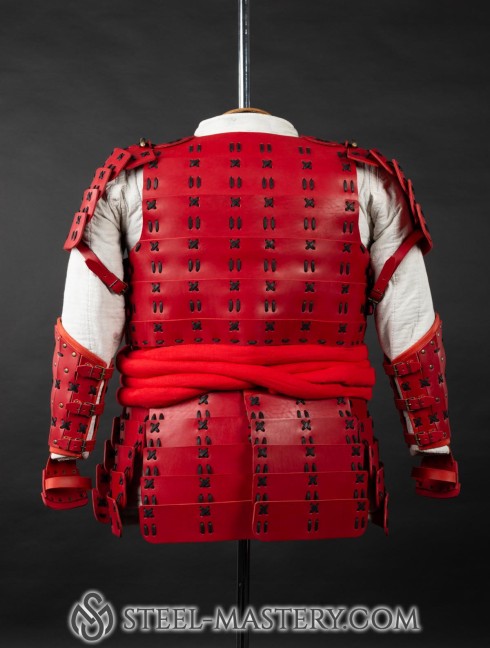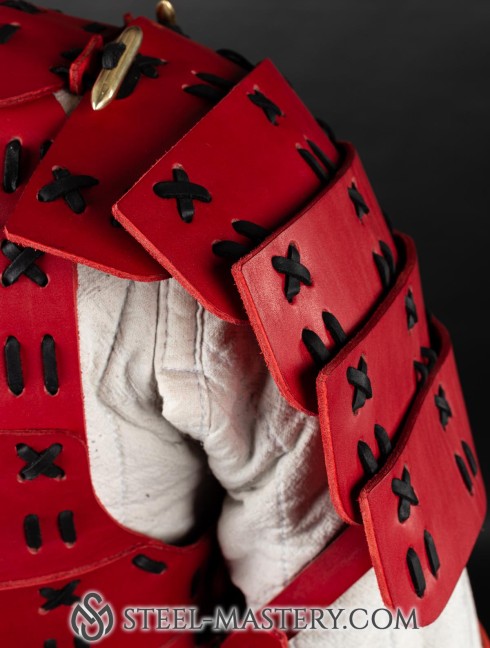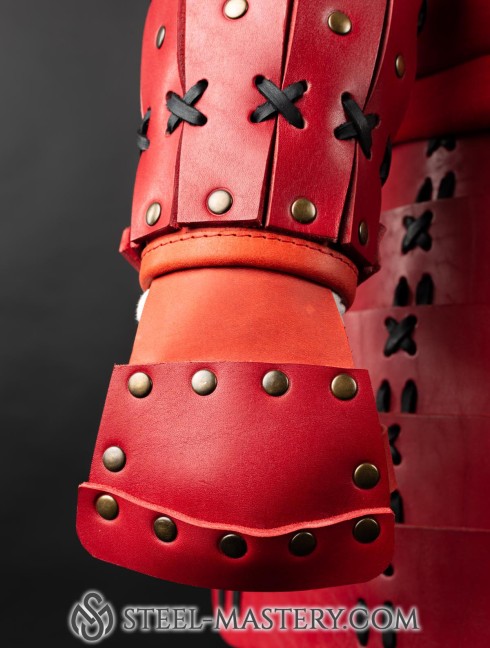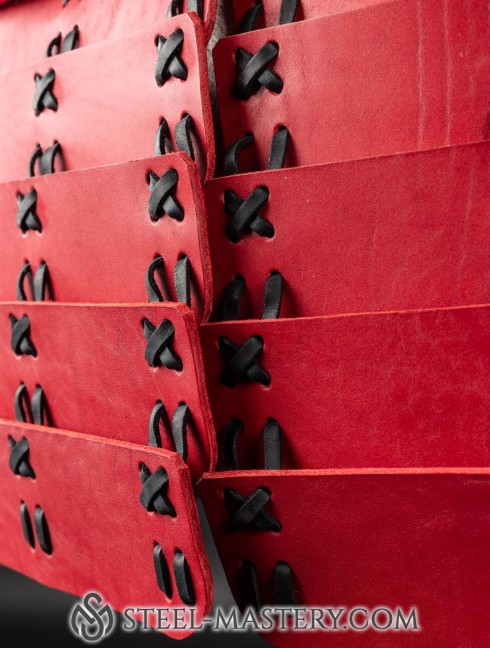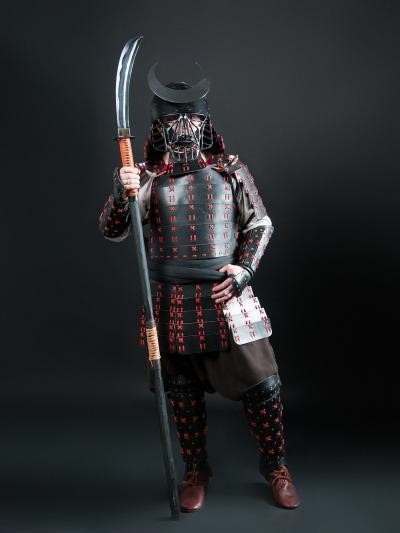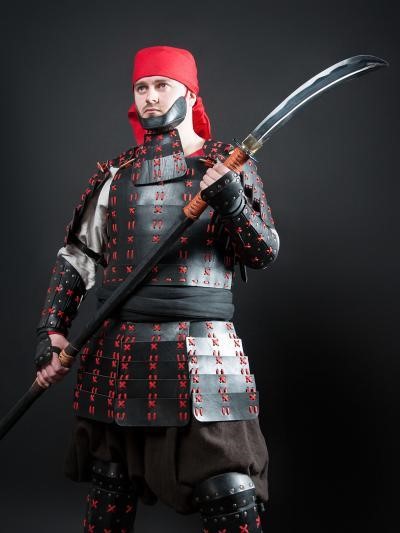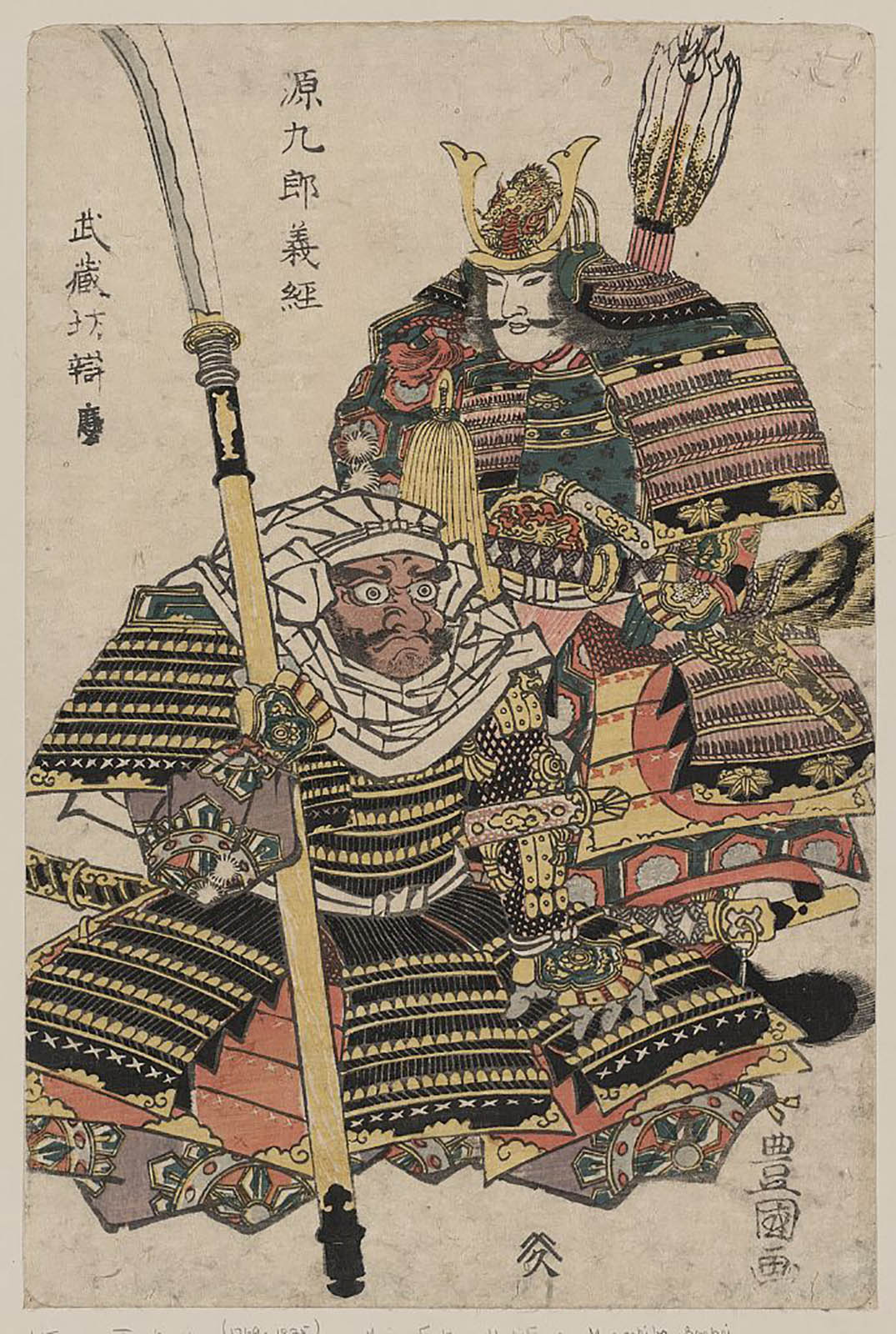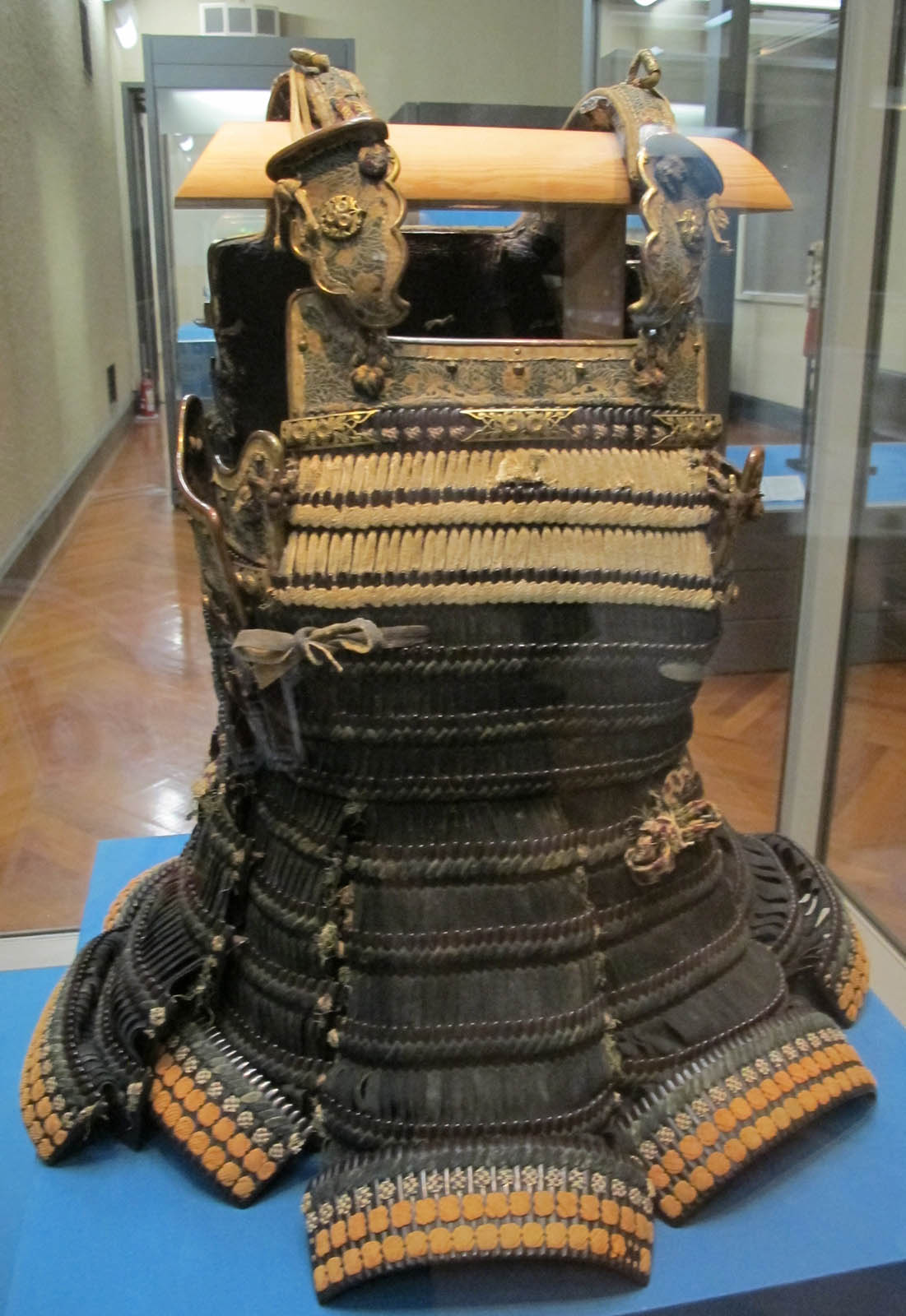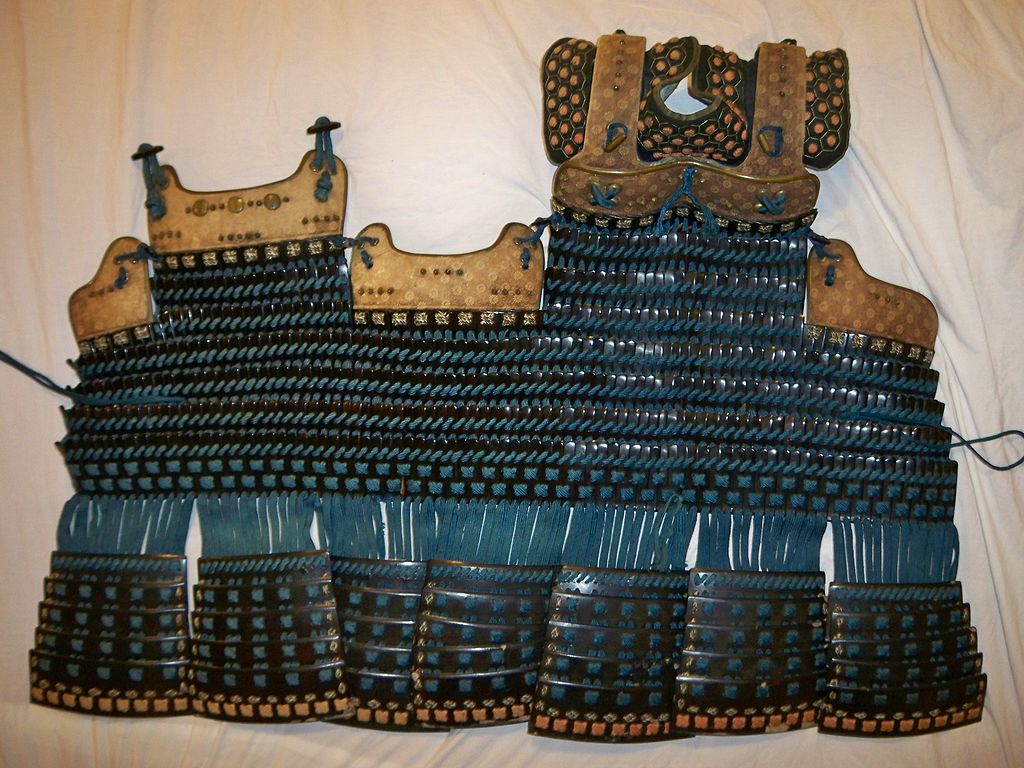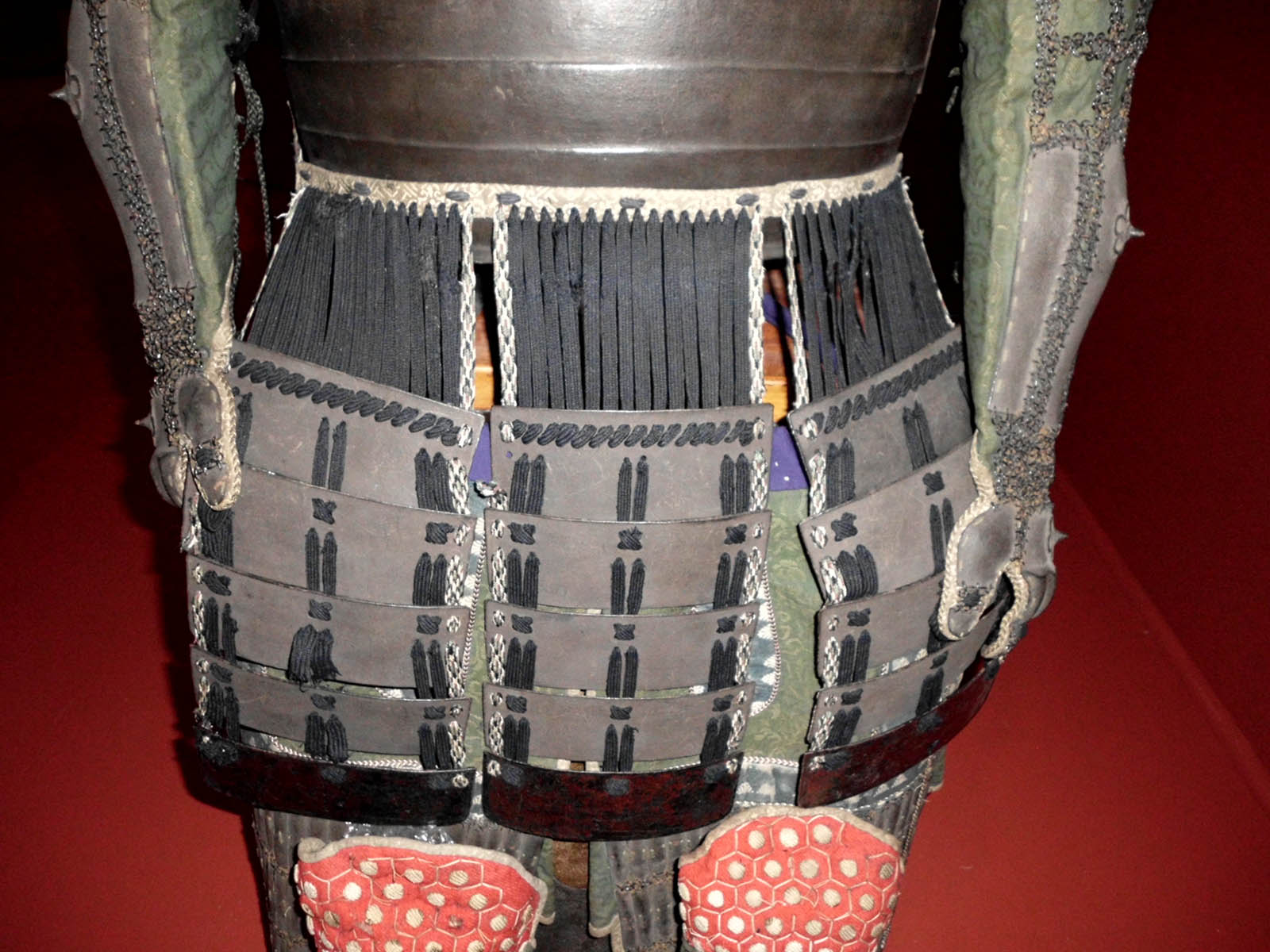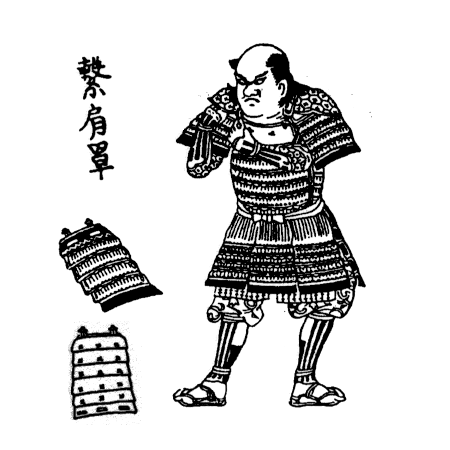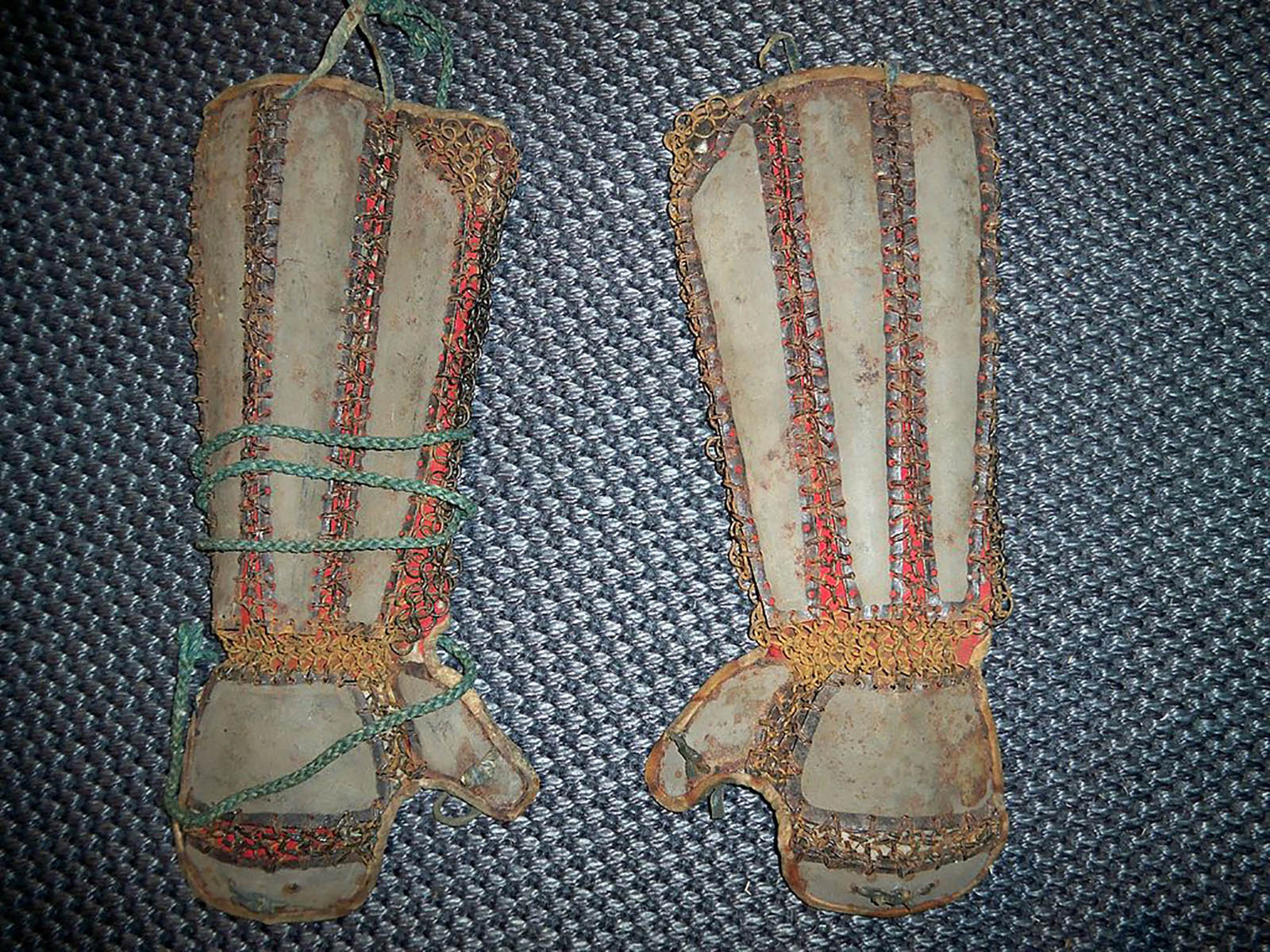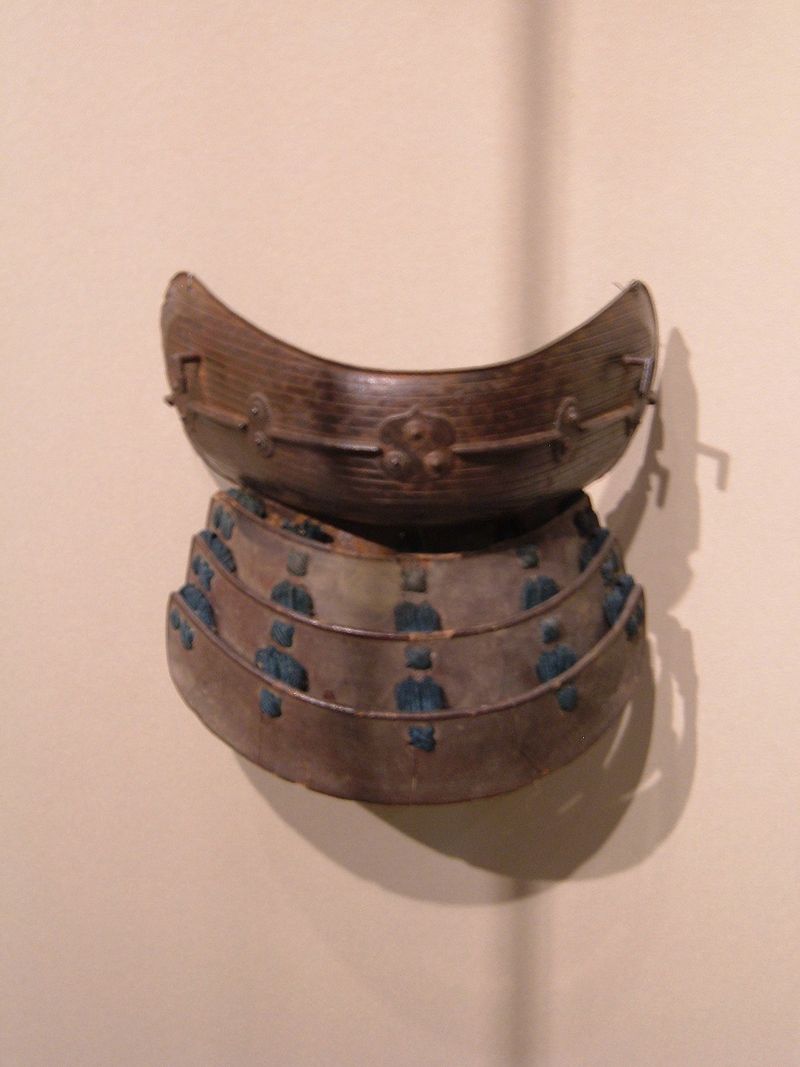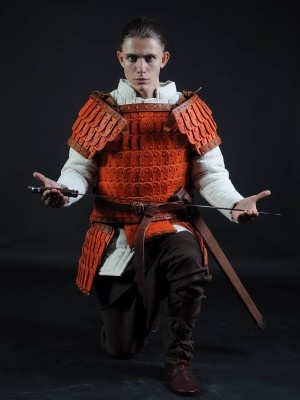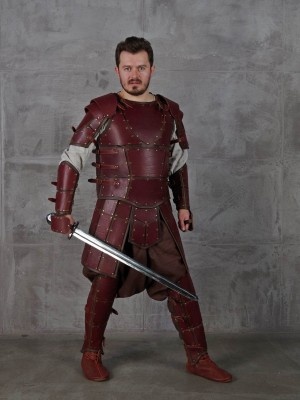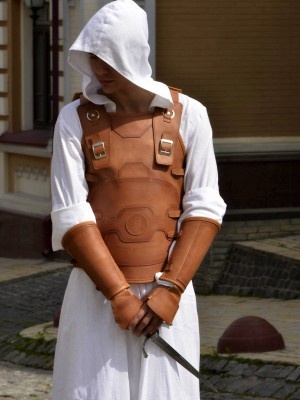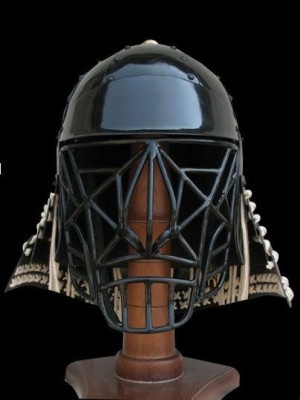O Yoroi - Japanese samurai leather warrior armor
LMA-16
Total
€1,200
Les frais d'expédition seront ajoutés au prix final de la commande une fois l'article est ajouté au panier et votre adresse de livraison est renseigné. Les frais d'expédition dépendent de votre région géographique et de l'article commandé.
O Yoroi - Japanese samurai leather warrior armor
Fait sur mesure
Cet article est fait sur mesure, cela veut dire que pour sa fabrication nos artisans utilisent les mesures corporelles de chaque client individuel.
Un tel type de fabrication permet d'assurer un ajustement parfait d'article.
description
A samurai unarmored
is like a samurai armored,
but only unarmored.
Benkei’s dōmaru or Japanese samurai leather warrior armor set
When snow at the spurs of Fuji starts to melt, a wind is coming off the top picking dainty petals of sakura. They are leave with the wind like a pink blizzard to the lonely pine on the rock. Timidly they are touching domaru of ironclad and proud-hearted lonely warrior monk, who stands and muses upon eternity. So let us tell you a few words about domaru armor, he dressed in.
Stylish, comfortable and cross-functional armor for anyone, who would like to get a feel for rich culture of Japan and feel like a samurai just for a short while. Domaru armor is definitely the most practical model of all types of Japanese armors - well protecting, but leaving a fighter mobile; stylish and impressive, but not too cluttered with decorative elements. Full of modesty and dignity, today’s samurai can wear domaru to SCA, HEMA, LARP and reenactment events, medieval festivals and stage performances.
Base price domaru armor set includes (as on the main photo) following options:
- Cuirass with kusazuri skirt made of tied together black leather plates (hard belt leather 3-4 mm thick)
- Shoulders made of tied together black leather plates (hard belt leather 3-4 mm thick)
- Mask for chin and neck protection made of tied together black leather plates (hard belt leather 3-4 mm thick)
- Greaves with protection of the knee and arch of the foot, made of tied together black leather plates (hard belt leather 3-4 mm thick) with "crazy horse" skin (1.4-1.6 mm thick) as a base
- Bracers of long vertical strips and fingerless rear of wrist attached to them, made of tied together black leather plates (hard belt leather 3-4 mm thick) with "crazy horse" skin (1.4-1.6 mm thick) as a base
- Red "crazy horse" leather (1.4-1.6 mm thick) as a cords (nylon cord as an option)
- Black leather straps with steel buckles
- Black belt made of cotton pipe, filled with batting (radius - 3-3.5 cm length - 4 m)
However, if your debt of a samurai require from you other armor then as an additional option you can choose other leather, other colors, other cord from all we have and skinners will make such armor for you. If you choose any unusual model, material, color or pattern, please contact us via email [email protected].
Benefits, which you’ll get, if you buy Domaru leather armor set at Steel Mastery:
- Custom-made leather armour, made of 100% natural leather by your individual parameters;
- Reliability and comfortable wearing for years;
- Product made by skinners with over 15 years experience;
- Convenient payment systems (PayPal, Skrill, Visa, MasterCard, American Express);
- Rework your order at our own expense or do a full refund in case if you don’t like an item.
Check out these models of full leather armor sets: leather lamellar armor, leather plates armour, leather armour in style of Game of Thrones.
We offer to complete your body protection with one of our padded armour sets and head protection with japanese kabuto with bar grill. In section Leather armor you can see all models that we offer for ordering. If you did not find any for your taste and wish, please send us photo and description of the required model and we will make it for you.
If we goes to the historical roots, so pre-Sengoku Japanese armor, with which we are concerned, was developed from the armor, used in ancient China and Korea. From such pre-samurai armor as tanko and keiko, it became more complicated and developed to kozane dou gusoku, an armor, more familiar for our eye. This armor looked as a lamellar cuirass, consisted of separate plates kozane, which gave name to this type of body protection.
This armor belongs to such type:
- O-yoroi – mostly for mounted samurais
- Dō-maru – for dismounted warriors
- Hon kozane dou – armor of small plates
- Hon-iyozane dou – armor of big plates
Name of this slightly doaru armor (胴丸) may be translated as “a one that goes round a body”. This younger brother of splendid ō-yoroi appeared together with it in Kamakura period in the end of the XVV century and almost completely replaced its elder brother to the XV century. It was designed not so much for sitting in the saddle with menacing look and leading the armies, but for more practical and prosaic battle actions. Oh, commanders and their ō-yoroi were taking participation in battles from time to time, but there were much more fights for more humble dismounted samurais and their domaru. So, our hero is not overburdened with excessive flashy details, but faultlessly protects in action. Also, the fact that warrior could quite quick wear and fasten this armor without outside help became another great advantage of domaru armor. But, we cannot say the same about ō-yoroi: dressing in the Great Armour required help of servants and took considerable amount of time.
Not ordinary warriors were wearing not only ō-yoroi, but domaru as well. Here is monk-warrior Saito Musashibō Benkei together with one of the commanders of that epoch Minamoto no Yoshitsune. While honorable son of Minamoto clan of Japan wears ō-yoroi, modest, but legendary monk is dressed just in domaru. The same black domaru as we made, but with golden cords, not with red.
Genkuro Yoshitsune and Musashibo Benkei, Utagawa Toyokuni
So, make yourself comfortable and have a look at this armored good-looker in front of you! Though, it is modest enough, this true son of the Land of the Rising Sun is steeped in Buddhist humility, hardened by spirit of bellicose warrior monks sōhei and is perfect even in details. From the splendid black leather, equally modest and striking, to the bright and firm cord of the noble and manly scarlet color, with which armor’s parts are fastened together. However, you may choose other colours of leather and cord by your wish.
Back and chest of sōhei are reliably protected by Japanese chest plate dou. It consists of horizontal plates, which as defends well, so gives wearer good mobility on the battlefield. Domaru dou is fastened on the sides that allows perfect fitting on the body. Straps watagami keep domaru armor on the shoulders.
Domaru, XIV century
By the way, primarily, domaru was separable only from one side. In time, it was divided into front and rear parts for more comfortable keeping and transportation.
Nerigawa (leather) hon kozane maru dou
Hips of the humble votary of Buddha are protected with a skirt, consisted of long and narrow kusazuri, which, in their turn, consisted of seven kusazuri of five rows each.
Antique Japanese Edo period kusazuri
It stands to mention that early version of domary were not a Japanese shoulder armor due to lack of the shoulders by itself. So, caring about effectiveness of your protection, we recreated later version of armor. However, we did not add unhandy o-sode, which are good for cavalry battle, but added more plain and hardwearing sode, which perfectly complete domaru, protecting wearer and not hindering the arms’ movements.
A Japanese Edo period woodblock print of a samurai putting on sode, 1735
Well, what is below? Below, there are kote armor – traditional Japanese han kote: bracers of long vertical strips and gauntlets, attached to them, which protect hand, but leave fingers free. It is easy as to fight, so to pray in them.
Antique Edo period kote armor or han kote
Suneate protects calves of the humble warrior monk. There are traditional plates greaves with protection of the knee and arch of the foot.
Finally, chin and neck are protected with lighter variant of kabuto mask men-gu – hanpō. There is a choice of truly stouthearted men. This mask protects minimal part of the face and leaves the biggest breadth and movability, but demands the biggest swordsmanship.
Hanpō at the Asian Art Museum, San Francisco
That is a set, strong, modest and genuine, just like legendary sōhei Benkei, who provided inspiration for our artisans for this Japanese samurai leather warrior armor. Helmet Kabuto and sword naginata are not included to the set. But, we recommend you to complete this leather set and order this medieval Japanese helmet. Besides, with Buddha’s blessing, after well-beseeming meditation, Steel Mastery blacksmith is ready to make haramaki (it is domaru, fastened on the back, not on the sides) and even one-of-a-kind and splendid O-yoroi for aficionados of beautiful armor.
Si pour une raison quelconque vous n'aimez pas les produits reçus, vous pouvez lez retourner pendant 14 jours. Si l'article reçu présente les défauts ou ne corresponde pas à vos paramètres nous allons fabriquer un nouvel article et nous vous l'enverrons à nos frais. Si le service postal a perdu votre colis, nous allons le chercher. Si le colis ne peut pas être trouvé, nous allons produire un nouvel article à nos frais.
Nous expédions les commandes par le Service Postal National qui achemine votre commande à votre bureau de poste local. Après l’expédition nous vous transmettons le numéro de suivi de votre colis. Veuillez nous contacter si vous avez besoin de livraison express (DHL, TNT, etc.).
Chaque produit est fait à la main et sa production nécessite un certain temps. Temps estimé :
- Gambison et armure matelassée - 8-9 semaines
- Costumes et autres vêtements - 4-6 semaines
- Brigandines – 3-4 mois;
- Accessoires en cuir - 2-4 semaines
- Armures en métal - 2-5 mois

